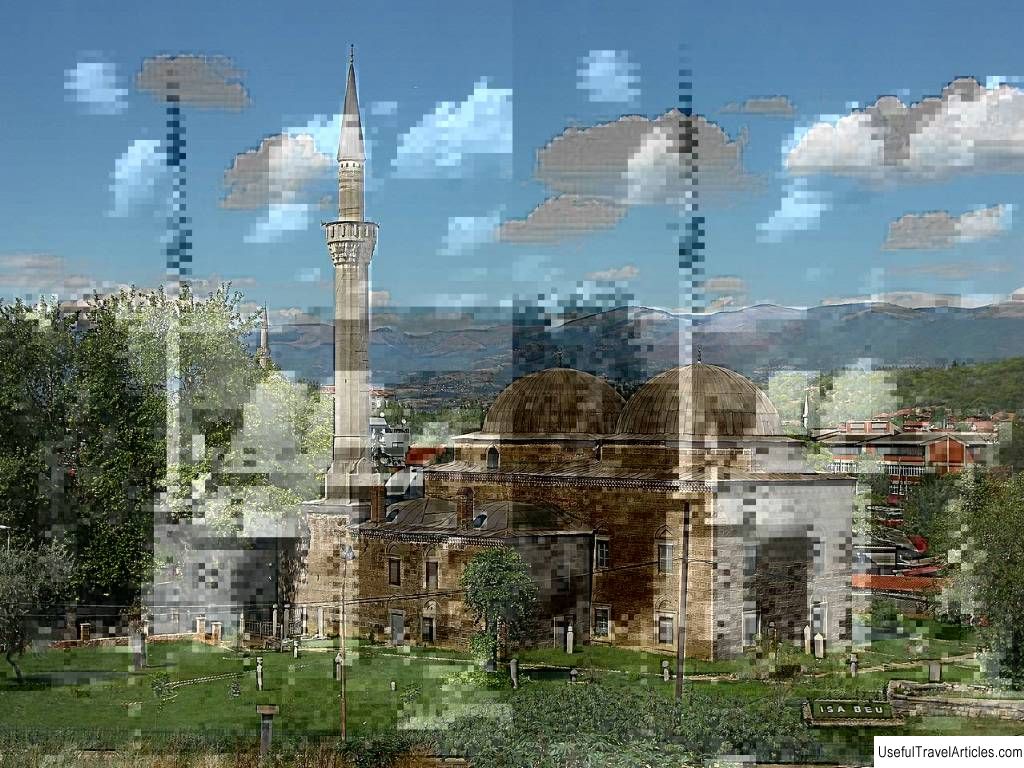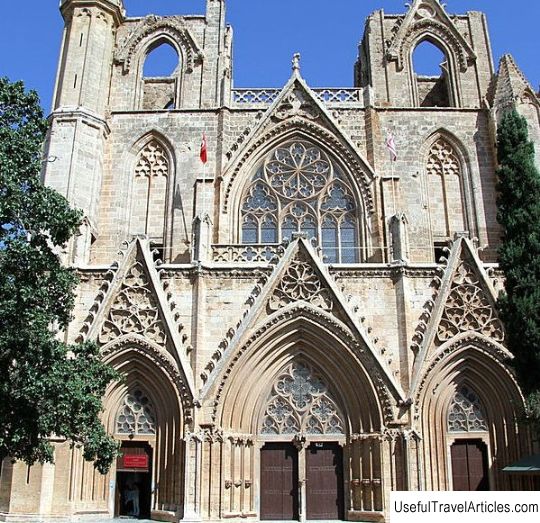Mustafa Pasha Mosque description and photos - Macedonia: Skopje

Mustafa Pasha Mosque description and photos - Macedonia: Skopje. Detailed information about the attraction. Description, photographs and a map showing the nearest significant objects. The name in English is Mustafa Pasha Mosque. Photo and descriptionThe Mustafa Pasha Mosque is built on a hill overlooking the Old Bazaar in Skopje. It is the largest Muslim temple and one of the best preserved monuments of Islamic architecture in Macedonia. The shape of the mosque has not changed significantly since 1492 - the time of the construction of this building. The mosque was named after its founder, the vizier of Sultan Selim I, Mustafa Pasha. At the end of the 15th century, he owned four villages in the vicinity of Skopje and could not deny himself the pleasure of building a large mosque here for centuries. It was erected on the site of the old Christian Church of the Holy Savior. The creator of the mosque is mentioned by an ornate inscription made on a marble board that can be seen above the main portal. The mosque is a one-story building with a 42-meter high minaret. Each wall of the mosque has 5 windows. The mosque is a typical example of classical Ottoman architecture. This is evidenced by clear and correct proportions, a large dome, a slender minaret, a porch with marble columns located on the north side. A sarcophagus is installed in the turban (mausoleum) adjacent to the building, where Mustafa Pasha himself, who died in 1519, and one of his daughters, Umi, rest. The mosque is surrounded by a rose garden. In 1912, Mustafa Pasha's mosque was no longer used for its intended purpose, and during the First World War it was turned into a military warehouse. In 1963, the building was seriously damaged by an earthquake. The restoration of the mosque began only in 2006 with the financial support of the Turkish government. Its reconstruction was completed in August 2011. The mosque is a typical example of classical Ottoman architecture. This is evidenced by clear and correct proportions, a large dome, a slender minaret, a porch with marble columns located on the north side. A sarcophagus is installed in the turban (mausoleum) adjacent to the building, where Mustafa Pasha himself, who died in 1519, and one of his daughters, Umi, rest. The mosque is surrounded by a rose garden.In 1912, Mustafa Pasha's mosque was no longer used for its intended purpose, and during the First World War it was turned into a military warehouse. In 1963, the building was seriously damaged by an earthquake. The restoration of the mosque began only in 2006 with the financial support of the Turkish government. Its reconstruction was completed in August 2011. The mosque is a typical example of classical Ottoman architecture. This is evidenced by clear and correct proportions, a large dome, a slender minaret, a porch with marble columns located on the north side. A sarcophagus is installed in the turban (mausoleum) adjacent to the building, where Mustafa Pasha himself, who died in 1519, and one of his daughters, Umi, rest. The mosque is surrounded by a rose garden.In 1912, Mustafa Pasha's mosque was no longer used for its intended purpose, and during the First World War it was turned into a military warehouse. In 1963, the building was seriously damaged by an earthquake. The restoration of the mosque began only in 2006 with the financial support of the Turkish government. Its reconstruction was completed in August 2011. This is evidenced by clear and correct proportions, a large dome, a slender minaret, a porch with marble columns located on the north side. A sarcophagus is installed in the turban (mausoleum) adjacent to the building, where Mustafa Pasha himself, who died in 1519, and one of his daughters, Umi, rest. The mosque is surrounded by a rose garden.In 1912, Mustafa Pasha's mosque was no longer used for its intended purpose, and during the First World War it was turned into a military warehouse. In 1963, the building was seriously damaged by an earthquake. The restoration of the mosque began only in 2006 with the financial support of the Turkish government. Its reconstruction was completed in August 2011. This is evidenced by clear and correct proportions, a large dome, a slender minaret, a porch with marble columns located on the north side. A sarcophagus is installed in the turban (mausoleum) adjacent to the building, where Mustafa Pasha himself, who died in 1519, and one of his daughters, Umi, rest. The mosque is surrounded by a rose garden.In 1912, Mustafa Pasha's mosque was no longer used for its intended purpose, and during the First World War it was turned into a military warehouse. In 1963, the building was seriously damaged by an earthquake. The restoration of the mosque began only in 2006 with the financial support of the Turkish government. Its reconstruction was completed in August 2011. A sarcophagus is installed in the turban (mausoleum) adjacent to the building, where Mustafa Pasha himself, who died in 1519, and one of his daughters, Umi, rest. The mosque is surrounded by a rose garden.In 1912, Mustafa Pasha's mosque was no longer used for its intended purpose, and during the First World War it was turned into a military warehouse. In 1963, the building was seriously damaged by an earthquake. The restoration of the mosque began only in 2006 with the financial support of the Turkish government. Its reconstruction was completed in August 2011. A sarcophagus is installed in the turban (mausoleum) adjacent to the building, where Mustafa Pasha himself, who died in 1519, and one of his daughters, Umi, rest. The mosque is surrounded by a rose garden.In 1912, Mustafa Pasha's mosque was no longer used for its intended purpose, and during the First World War it was turned into a military warehouse. In 1963, the building was seriously damaged by an earthquake. The restoration of the mosque began only in 2006 with the financial support of the Turkish government. Its reconstruction was completed in August 2011. In 1963, the building was seriously damaged by an earthquake. The restoration of the mosque began only in 2006 with the financial support of the Turkish government. Its reconstruction was completed in August 2011. In 1963, the building was seriously damaged by an earthquake. The restoration of the mosque began only in 2006 with the financial support of the Turkish government. Its reconstruction was completed in August 2011.  We also recommend reading House of officers of the fleet description and photo - Ukraine: Nikolaev Topic: Mustafa Pasha Mosque description and photos - Macedonia: Skopje. |




